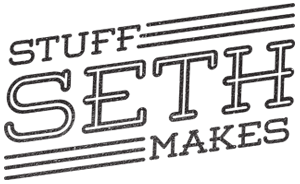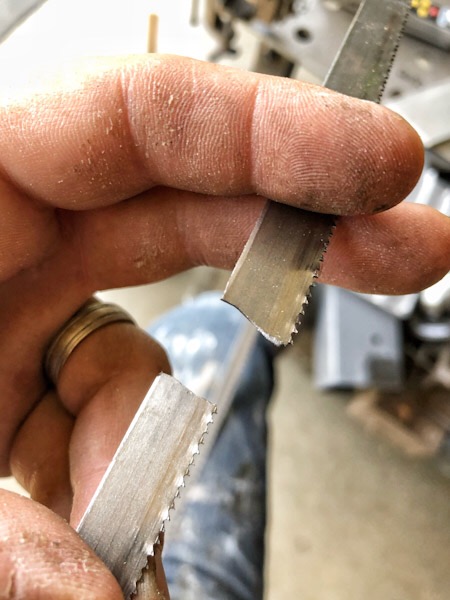Do you ave an epoxy tabletop project coming up? Maybe you’ve been thinking about pouring epoxy for the first time, or maybe you’ve poured epoxy on a lot of tables in the past but are looking for another option to try out. There are so many epoxy products on the market and the options can be overwhelming. In this article I’m going over a couple brands that I’ve used and I’m going to discuss some of the pros and cons of each brand I’ve used. So if you want to find out which tabletop epoxy is best, keep reading! If you’re more of a video watcher, check out my video instead:
I just finished another batch of tabletops and the main difference between this batch and the past batches was the brand of tabletop epoxy I used. Over the last couple years I’ve done about 120 tabletops but for the first 110-ish I used a product called Famowood Glazecoat. When I started that project I had never used an epoxy product before and I was a little intimidated, but the 1:1 mix ratio was pretty difficult to mess up. For this most recent batch of tabletops I needed an epoxy product with some UV protection qualities which is what lead me to search for a different brand and my video talks a bit more about that.
.jpg)
I had always thought Total Boat epoxy was significantly more expensive than the Famowood Glazecoat but when I found the TotalBoat tabletop epoxy, it was only a few dollars more and I felt it was worth it to give it a try on this build. In my video I also go into more detail about the pricing and how much the epoxy costs. Definitely check it out!
Mixing & Consistency
When mixing up a batch of each brand of epoxy, there are a couple main differences that I noticed right away. The first difference was the thickness of Part A. The Famowood Glazecoat Part A was thinner and it flowed out of the bottle a little smoother while the Part A of the TotalBoat was noticeably thicker and poured out of the jug more slowly. This will come into play later. The next big difference is the duration of stirring and mixing of the two brands. The bottom line here is, lots of extra stirring with the Famowood product….less stir time with the TotalBoat. Again, more details in my video and why maybe a thinner mix might be preferred over a thicker mix depending on your project…
.jpg)
Setup & Cure Time
Curing time can play a huge role in finishing a project, especially if it’s a client project because time is money! I found the Famowood Glazecoat took several hours before it was at the point where it was safe to touch without leaving a fingerprint in it. That was usually an overnight wait time. With the TotalBoat epoxy however, I found that I was ready to do another coat after about 4 hours (give or take). This meant I could get get 2 or even 3 coats poured in one day. Not too shabby! A quick cure time is also helpful for other reasons. For instance, a quicker cure time gives stuff like dust and bugs less time to land in the finish. Of course, you should always do epoxy pours in the cleanest area you possibly can but when you work at home you gotta work with what you’ve got, haha!!!
.jpg)
Epoxy Odor & Smell
Any chemical process is going to have some kind of smell. Famowood Glazecoat has a noticeably stronger odor than the TotalbBoat Tabletop Epoxy. Check out the video to hear how the smell affects my father in law, haha! Whenever you’re pouring these products (even the less-smelly products) make sure you open some windows and maybe even use a paint fume respirator!!
Epoxy Hardness
Remember earlier when I was talking about Part A of each brand and how it will come into play later? Well, what I was referring to was the hardness of the epoxy once it cured. I found that the thicker Part A of TotalBoat Tabletop Epoxy results in a harder cure. I go into it a bit more in my video but basically I can certainly tell a difference in the hardness of the finished table top between the Famowood and the TotalBoat and I give an example of how I could tell. I’ve also used both of these epoxy products for a couple turning projects on the lathe and again, the TotalBoat product was harder and more stable in my turning project (which was a wine bottle stopper).
.jpg)
Which Epoxy Is Best?
Well, after doing 110 restaurant tabletops with Famowood Glazecoat and then doing another 10 with the TotalBoat Tabletop Epoxy, I really fell in love with the TotalBoat. I feel like I can save time and money (and my sense of smell and my braincells) with the TotalBoat. For my projects and the way I use it, I have to say I’ve got a NEW FAVORITE PRODUCT! And NO, for those of you thinking it, this is NOT a sponsored post. I used these products and compared them on my own dime (well I guess it was the client’s dime, but you know what I mean, lol!). Don’t get me wrong, the Famowood is still a good product. The first 110 tables are still in great shape and holding up to the abuse very well. But I think if you did that many tabletops with the Famowood and then did a few with the TotalBoat you’d notice a big difference too. I just wish I had found the TotalBoat Tabletop Epoxy sooner!
.jpg)
You might want to just buy some of each and do your own first-hand comparison. The following links are links to some products I’ve used when working on epoxy projects (via my Amazon links). As an Amazon Associate I earn from qualifying purchases, and any earnings made through my Amazon links helps me cover my webhosting costs. I appreciate you all using my Amazon links!
Thank you so much for stopping by my site and reading up on my experiences with tabletop epoxies. I hope you found it helpful and I hope you’ll watch my video (“What Is The BEST Tabletop EPOXY Resin – Famowood Glazecoat vs TotalBoat”) as well. If you’re interested, here’s a link to a playlist where I built some of the previous tabletops. Definitely a good watch! TABLETOP BUILD PLAYLIST
Bonus
When doing as many tables as we’ve done, it’s really helpful to have a father-in-law who likes to get in some shop time, haha! My father-in-law has made the 5 hour drive from central California several times to give us a hand with various orders and to thank him for all the help I made him custom trophy designed and built just like the tables, complete with an epoxy coating! Of course, I had to put his go-to saying on the plaque, “good enough for government work!”
.jpg)
If you’re not already subscribed to my YouTube channel I would love to have you! Here’s the direct link STUFFSETHMAKES ON YOUTUBE….login, subscribe, and hit the thumbs up! The channel is growing quickly and I have a lot of videos in store!
I also post frequently on Instagram and you can follow me there using this link: StuffSethMakes on Instagram
Thank you all again, see you on the next project!
#epoxy #epoxypouring #tabletopepoxy #epoxyresin #epoxyprojects #totalboat #totalboatepoxy #famowoodglazecoat #epoxycomparison #epoxytable #epoxypour #epoxyart

.jpg)
.jpg)
.jpg)
.jpg)
.jpg)
.jpg)
.jpg)
.jpg)
.jpg)
.jpg)
.jpg)
.jpg)
.jpg)
.jpg)
.jpg)
.jpg)
.jpg) My next step was to trim off the excess from the maple strips, on the ends, edges and face. I had to make some shims so I could keep the drawer leveled as I ran it across the router table, and I used
My next step was to trim off the excess from the maple strips, on the ends, edges and face. I had to make some shims so I could keep the drawer leveled as I ran it across the router table, and I used .jpg)
.jpg)
.jpg)
.jpg)
.jpg)
.jpg)
.jpg)
.jpg)
.jpg)
.jpg)
.jpg)
.jpg)
.jpg)
.jpg)
.jpg)
.jpg)
.jpg)
.jpeg)
.jpg)
.jpeg)







